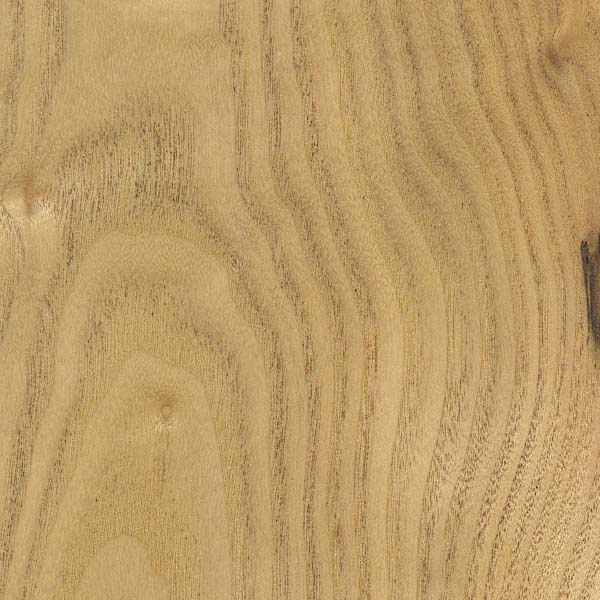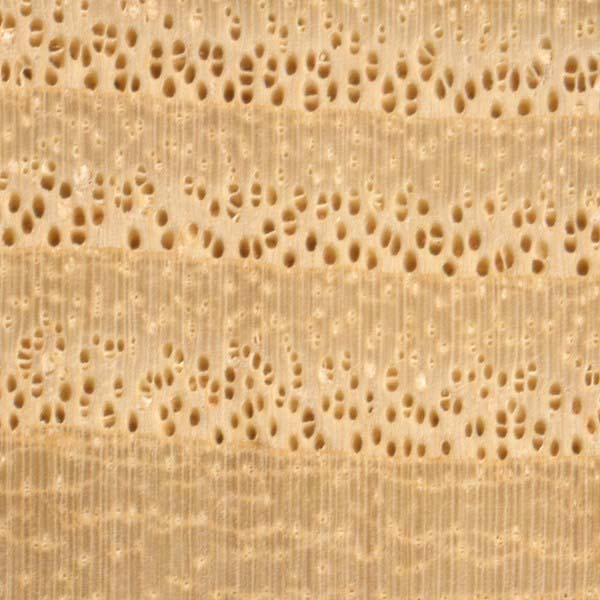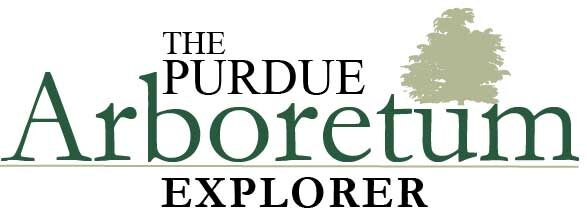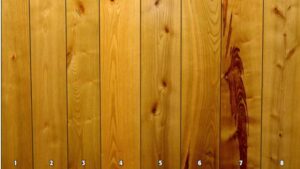Sassafras albidum
Summary
Boards 1 and 2 are characteristic of the best the species has to offer. Note the small cinnamon red burls that are unique to the species. Boards 3, 4, 5, and 6 show characteristic open and tight knots and characteristic grain patterns. Board 4 is lighter in color, but very characteristic of the species. Boards 7 and 8 represent low grade material. Board 7 shows the characteristic discoloration and soft wood that results from decay in standing trees. This decay is fairly common. Board 8 is cut from the heart of the log and shows a small section of pith, numerous defects, and a quartered grain pattern.
History
Sassafras ranges throughout the eastern United States. The tree is intolerant to shade and is frequently found colonizing abandoned fields, road sides, dry slopes, and old fence rows. On these sites, the species develops as a small usually poorly formed tree. It is also found as an occasional tree on rich woodland soils. On these sites, sassafras develops into small to medium sized trees that are harvested. The largest reported tree is about 7 feet in diameter at 4.5 feet above the ground.
Color & Texture
The sapwood is light yellow and narrow; the heartwood is light to dark brown, occasionally with cinnamon red swirls
about ¼ to ½ inch in diameter. The wood is ring porous, making the growth rings very distinct. The earlywood pores are
easily seen with the naked eye. The wood, when freshly cut, has the distinctive odor of sassafras. The wood tends to
darken with exposure to light.
Anatomical and Microscopy

https://www.wood-database.com/sassafras/

https://www.wood-database.com/sassafras/
Ring-porous; large earlywood pores 3-6 rows wide, small latewood pores solitary and radial multiples of 2-4; tyloses common; growth rings distinct; narrow rays may be barely visible without lens, spacing normal; parenchyma around latewood pores vasicentric, winged, lozenge, and confluent.
Wood Properties
- Workability
- Excellent machining characteristics
- Strength
- Intermediate to light weight wood. Mechanical properties relatively low
- Steam Bending
- Not yet rated
- Drying
- Dried with a moderate kiln schedule
- Shrinkage
- Green to oven dry 10.3%
- Decay
- Resistant to decay but standing trees often have pockets of
rot
Products
Sassafras is an attractive, light weight, easily worked, durable wood. Where it is available locally, it is often used for small woodworking projects. It is used in the millwork industry and for paneling. In the past, it was preferred for split rails and even posts. If larger quantities were available, it undoubtedly would be in demand for large scale commercial applications.

